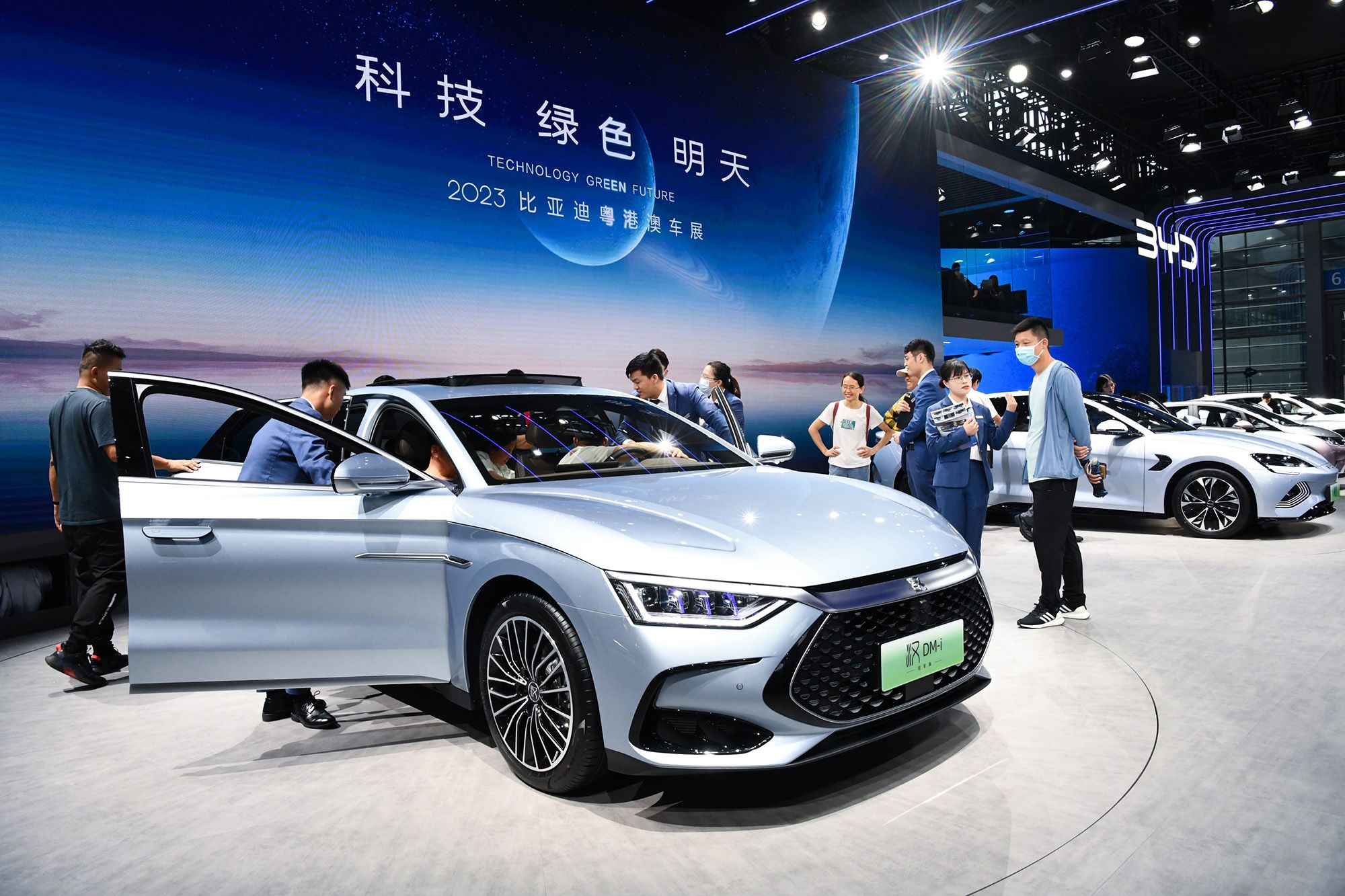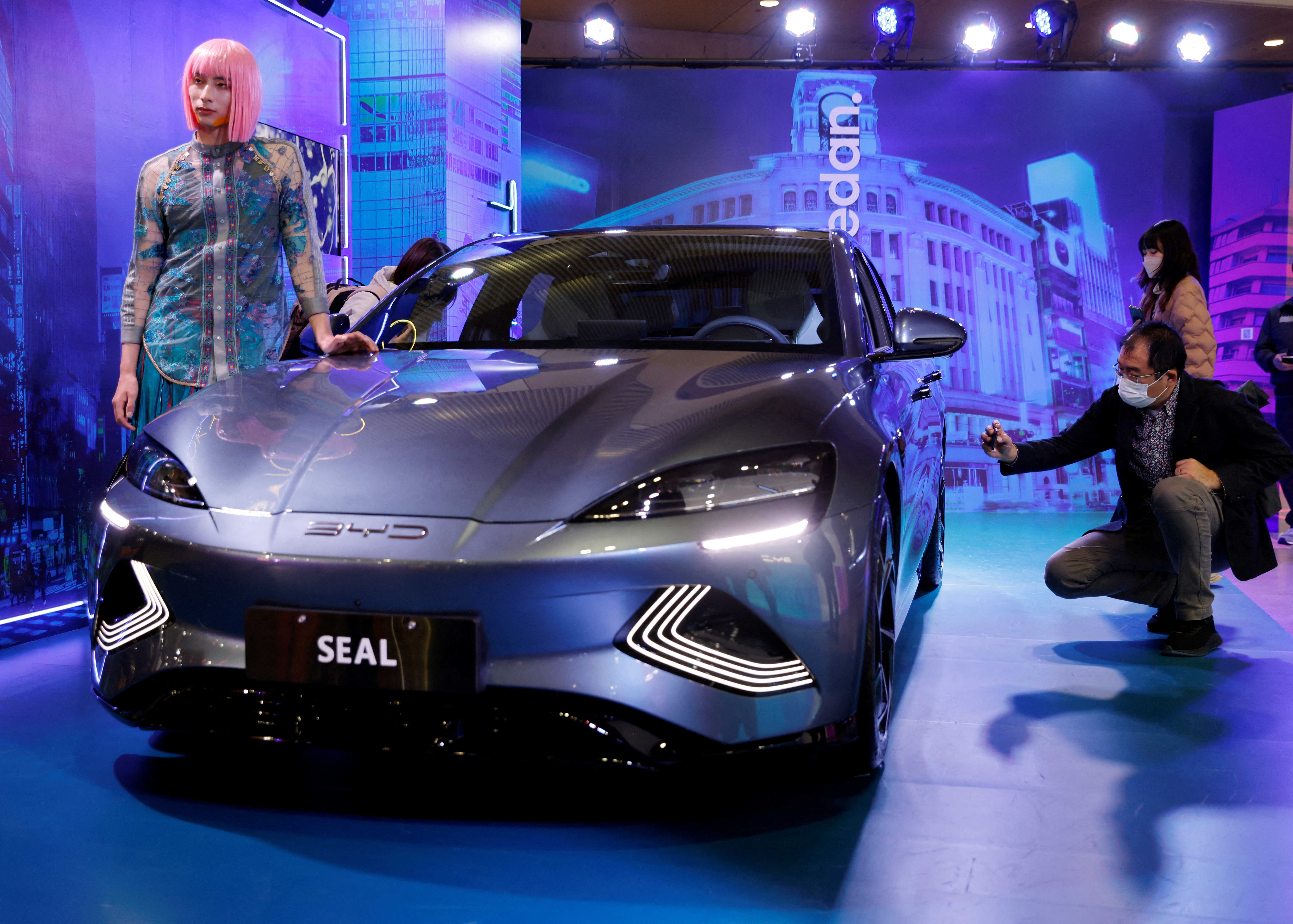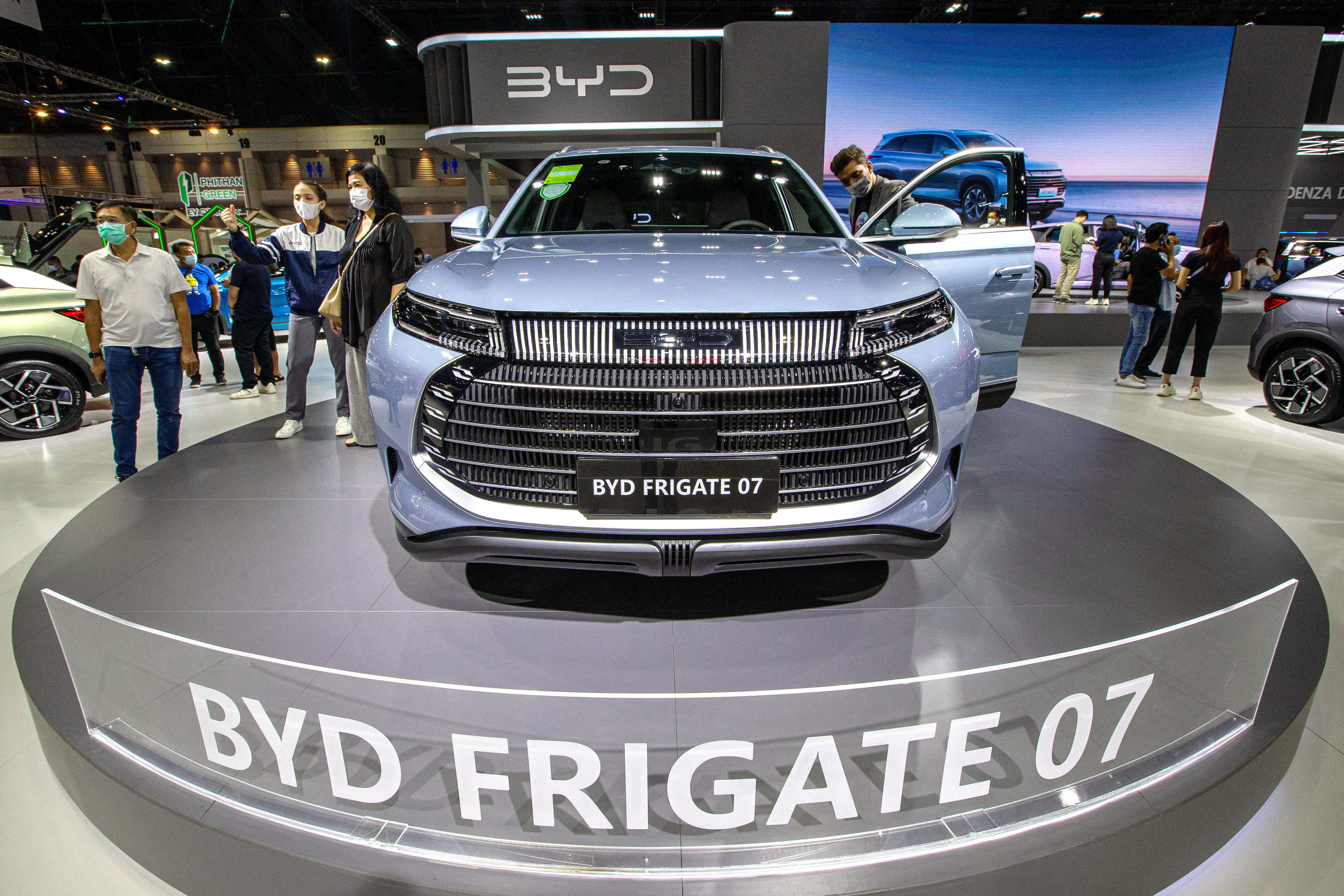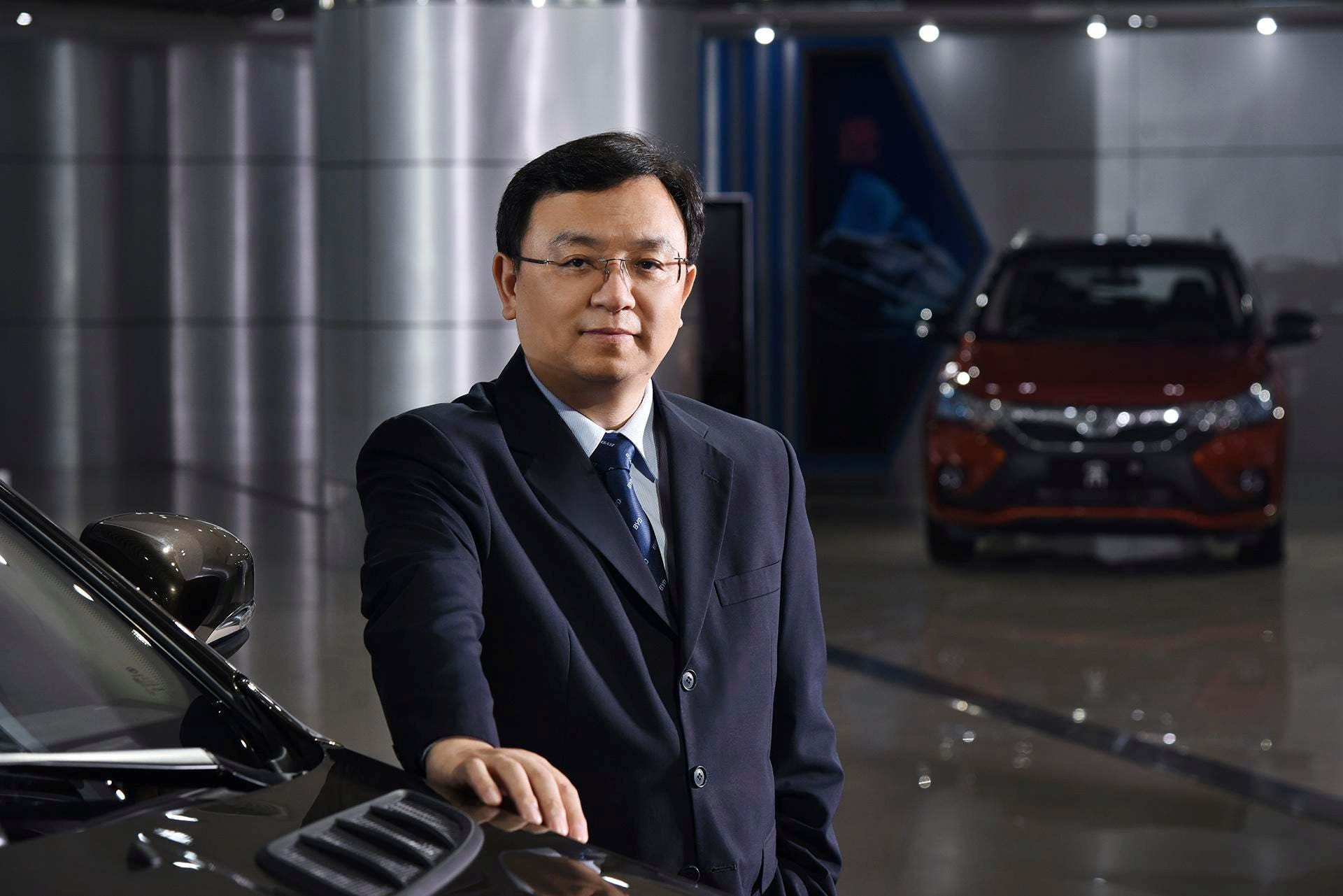
In the race for electric vehicle (EV) dominance, a new competitor has emerged from Shenzhen, China, that has already surpassed Tesla in annual sales. Despite this significant achievement, BYD—a Chinese EV manufacturer—has yet to pose a direct threat to Tesla’s stronghold in the United States.
Nevertheless, the company’s rapid rise, technological innovations, and aggressive expansion strategy are raising important questions about the future of the electric vehicle industry, and the role Tesla will play in it.
Over the past year, BYD has overtaken Tesla in global vehicle sales, marking a major milestone in the EV market. Once casually dismissed by Elon Musk and other industry leaders, BYD’s growth has been nothing short of extraordinary.
The company has increasingly positioned itself as a formidable rival to Tesla, with notable strides in both sales and technology.
BYD’s success can be attributed to several factors, including its ability to manufacture affordable EVs without sacrificing technology. The company has maintained competitive pricing while ramping up its production, allowing it to capture a significant share of the global EV market.
With its strong foothold in China—by far the world’s largest car market—BYD has now begun to turn its attention to international expansion.

While Tesla has long been seen as the leader in the electric vehicle market, particularly in Western markets like the United States, BYD’s rise challenges that narrative. “They’re not resting on their laurels,” said Tu Le, founder of Sino Auto Insights, commenting on BYD’s continued innovation and market drive. “They’re content to push the envelope and set the pace for the whole world.”
One of the key areas where BYD has been advancing beyond Tesla is in battery technology and charging speed. Last week, the company unveiled a revolutionary charging technology that can add 250 miles of range in just five minutes—significantly outpacing Tesla’s Supercharger network, which takes about 15 minutes to add 200 miles of range.
This breakthrough has the potential to dramatically reduce charging times, which have long been one of the biggest barriers to EV adoption.
If successful, this new technology could help alleviate one of the main criticisms of electric vehicles—charging speed. While Tesla’s Superchargers have been lauded as some of the best EV charging infrastructure globally, BYD’s faster charging could force even Tesla to up its game in the battle for EV market leadership.
Additionally, BYD recently launched its “God’s Eye” advanced driver-assistance system (ADAS), designed to compete with Tesla’s Full Self-Driving (FSD) feature. Not only does this technology bring BYD closer to Tesla in terms of autonomous driving capabilities, but it is also being offered at no extra cost on most of the company’s vehicles.
This stands in stark contrast to Tesla, where the Full Self-Driving feature can cost buyers thousands of dollars.

The combination of more affordable vehicles and cutting-edge technology has allowed BYD to gain ground on Tesla in multiple areas. From innovation to pricing, BYD is positioning itself as a serious contender in the global EV race.
Despite BYD’s impressive achievements, its ability to compete directly with Tesla in the United States remains an obstacle. For the time being, BYD, along with many other Chinese manufacturers, is effectively locked out of the US market due to a 100% tariff on Chinese-made passenger vehicles. This tariff has made it nearly impossible for companies like BYD to enter the US market, even though demand for electric vehicles in the country is at an all-time high.
The US market is critical for any automaker hoping to achieve global dominance. Tesla’s stronghold in the country, paired with the absence of any Chinese EV manufacturers, has allowed Tesla to maintain its dominance in North America.
However, industry experts, such as Tu Le, suggest that trade barriers and tariffs may create a false sense of security for Tesla and its competitors in the US. “They’re not planning to take their foot off the gas on research and development spend this year, so it’s going to be a consistent onslaught probably through the end of this decade,” Le said, referring to BYD’s ongoing commitment to technology and innovation.
While the company has struggled to enter the US market, BYD has been focusing on expanding into other regions where it faces fewer regulatory barriers. This includes Europe, Latin America, and parts of Asia, where BYD has been steadily increasing its presence.

Despite the hurdles in the US, BYD has been making substantial inroads into other international markets. For example, in Europe, the company has been ramping up its sales, and in Latin America, BYD’s vehicles have found a growing base of consumers looking for affordable, high-tech EVs.
The company has pledged to increase its total shipments by nearly 30% this year, with a particular focus on nearly doubling its overseas deliveries to over 800,000 vehicles.
But while BYD’s global expansion is impressive, it is not without its challenges. In Brazil, authorities discovered that workers at a BYD construction site were subjected to “slavery-like conditions,” a claim that the company later denied. Similarly, in Mexico, reports suggest that Beijing is delaying approval for a new local factory due to concerns about the transfer of sensitive technology to the US.
These incidents raise important questions about the ethical and operational challenges that come with expanding into foreign markets. While BYD is eager to grow its global footprint, it must navigate complex geopolitical landscapes, including the ongoing tensions between China and the West.
Despite these challenges, analysts are optimistic about BYD’s future. Lei Xing, an independent analyst focusing on China’s auto industry, believes the company has become an unstoppable force. “They’re just starting,” Xing said, referring to BYD’s ability to drive innovation and expand its offerings to meet the growing demand for electric vehicles globally.

In terms of innovation, BYD’s ability to develop faster charging technology and more affordable autonomous driving systems gives it a significant edge over competitors. If the company continues to push forward with its technology and operational efficiencies, it could make significant strides in the EV market, even if the US remains out of reach.
However, Tesla’s established presence in the US market and its continued innovations in both hardware and software mean that it will not be easily dethroned. Tesla’s commitment to infrastructure, particularly its Supercharger network, gives it an ongoing advantage in certain regions, especially in North America.
Furthermore, Tesla’s strong brand identity and Musk’s influence continue to play a significant role in maintaining consumer loyalty.
While BYD has made great strides in overtaking Tesla in global vehicle sales, it still faces significant challenges in becoming a direct threat to Tesla’s position in the United States. For now, the 100% tariffs and geopolitical tensions keep the Chinese automaker from fully competing in North America.

Nonetheless, BYD’s technological breakthroughs and aggressive global expansion strategy indicate that the company could become an even more formidable competitor in the coming years.
As the EV market continues to grow and evolve, BYD’s success will likely depend on its ability to navigate regulatory hurdles, manage ethical concerns in global operations, and maintain its focus on technological innovation. Tesla may still hold a strong position in the US, but BYD’s rise is a reminder that the race for EV supremacy is far from over.
In the end, BYD may not yet be able to challenge Tesla’s US dominance, but its rapid growth and innovations suggest that it is a company to watch in the next decade. The real question is: as BYD continues to push forward, will Tesla be able to maintain its lead, or will the Chinese automaker eventually eclipse it on the global stage? Only time will tell.


